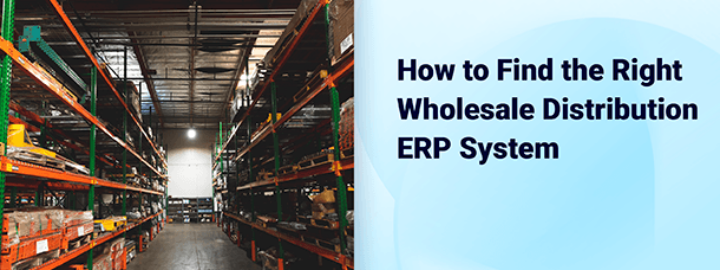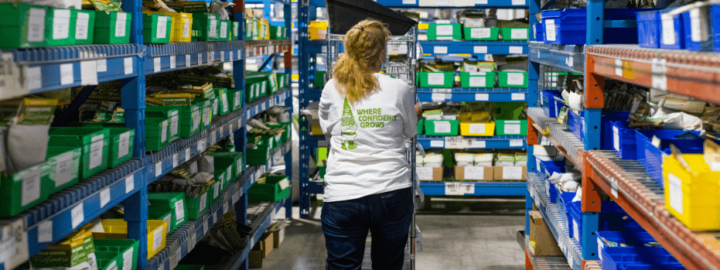
Supply chains are the connective tissue of the global economy, making all commerce possible. Their importance cannot be overstated, yet they are filled with near-infinite, constantly changing variables.
Predictions still have to be made about those variables, and those predictions are the foundation for business decisions. They have to be accurate, and supply chain processes across the board have to run like a well-oiled machine. These are some of the most important steps and biggest challenges today’s businesses face.
With this in mind, I sat down with Kelly Squizzero, Acumatica’s Senior Product Manager for Distribution, to talk about supply chain optimization. In this blog, you’ll hear from her about proven techniques for achieving optimization, challenges that can get in the way, the advantages of having an optimized supply chain, and how to choose the best supply chain optimization software for your business.
How would you define supply chain optimization?
Supply chain optimization focuses on making the supply chain work better. This means improving how products move from suppliers to customers. Optimization involves using technology to cut costs, increase profits, and deliver products on time.
Why is supply chain optimization important? What role does it play in improving overall business performance?
Supply chain optimization makes operations smoother and more efficient. When tedious tasks are automated, employees can focus on more important work. Meeting customer demands with accurate information and timely deliveries enhances satisfaction. Efficient inventory management reduces waste and ensures products are available, saving money. Overall, a well-optimized supply chain makes a business more agile and competitive in the market.
What are some common supply chain optimization techniques?
- Distribution Requirements Planning (DRP), which uses forecasts and real-time demand to ensure the right products are in the right place at the right time.
- Efficient Warehouse Management, which can be accomplished by using barcode scanning to guide staff, automating the packing process, and integrating with carriers for shipping.
- Ecommerce and Point-of-Sale (POS) Systems, which streamline the customer experience, supporting their desire for self-service and making transactions smoother and faster.
- And leveraging AI for anomaly detection to monitor irregularities in key business areas, such as sales order margins, accounts payable bills, and accounts receivable.
What core principles should organizations adhere to when they apply these techniques?
Transparency and collaboration are key. Sharing information openly with suppliers, customers, and employees builds trust, prevents errors, and improves efficiency. With all processes clear and open, everyone can understand the operations, make informed decisions, trust the system, and work together to achieve common goals.
Proactive, continuous monitoring also helps—regularly checking and adjusting strategies based on real-time data. This way, businesses can identify issues quickly and make necessary improvements.
Finally, use reliable, ethical AI tools. Trustworthy AI developed in a responsible, practical, and valuable way ensures data privacy and security, can be seamlessly integrated with existing workflows, and delivers tangible business benefits.
What are some common challenges businesses face with supply chain optimization? How can they be mitigated?
Supply chain disruptions are a major issue, with delays, increased shipping costs, and inventory shortages caused by global conflicts, economic instability, and natural disasters. To address this, businesses can diversify suppliers and use advanced planning tools to anticipate disruptions.
Inventory management is another challenge. Managing thousands of SKUs without a system that can handle them leads to overstocking, stockouts, lost sales, and higher holding costs. Automated inventory systems track stock levels and predict demand, reducing these risks.
Technology integration is crucial. Many distributors use patched-together solutions with fragile integrations, making upgrades difficult and risky. Investing in robust, integrated, easy-to-use systems provides a stronger technology base and improves efficiency.
And customer retention is vital, of course, but it’s also challenging. Offering personalized care, timely deliveries, and consistent product availability is essential, but balancing these demands with operational hurdles can be tough. Businesses can improve customer retention by enhancing service levels and using technology to streamline operations.
Are there any unexpected advantages companies often overlook when optimizing their supply chains?
While businesses often recognize that supply chain optimization improves customer satisfaction, they may not realize it also boosts employee satisfaction. Steps taken to streamline processes lead to less chaos and a more meaningful flow of work. Employees get to focus on purposeful tasks rather than constantly dealing with problems. Happier employees feel better about their work and find it more meaningful.
When distributors optimize supply chains, they reap another advantage. Distributors are crucial to supply chains, sitting in the middle and connecting suppliers with customers. By improving supply chain processes, distributors can enhance their value and demonstrate their importance. This is an opportunity to overcome disintermediation by carving out a niche—for instance, offering specialized services that set them apart from competitors.
Lastly, companies often miss the potential for improved sustainability and reduced environmental impact. Optimized supply chains lower energy consumption and waste. Real-time data analytics can help identify areas for sustainability improvements by pinpointing inefficiencies and suggesting greener alternatives. By focusing on sustainability, companies help the environment, enhance their reputations, and reduce costs.
What effects have technological advancements had on supply chains and supply chain management processes?
Technological advancements have significantly transformed both. Automation streamlines operations, reduces manual tasks, and improves efficiency. Real-time data analytics provide up-to-the-minute visibility into inventory, order statuses, and shipping, allowing businesses to make informed decisions quickly. Integration of ecommerce and POS systems has enhanced the buying experience, making transactions smoother and faster.
Cloud technology and the mobility it brings have revolutionized supply chain management by providing scalable, secure solutions that can be accessed anytime, anywhere, on any device with an internet browser. These solutions, like Acumatica, ensure data is always available and up-to-date, facilitating real-time collaboration and decision-making. The cloud also reduces the need for on-premises infrastructure, lowering costs and simplifying IT management. In the warehouse, mobile devices enable employees to manage inventory, process orders, and handle customer inquiries on the go, enhancing flexibility and responsiveness.
More recently, AI and machine learning have introduced advanced capabilities, like anomaly detection, which can identify irregularities in sales order margins, accounts payable bills, and accounts receivable. This improves accuracy and helps prevent fraud.
Overall, these technological advancements make supply chains more efficient, responsive, and resilient, helping businesses stay competitive in a rapidly changing market.
What features should be prioritized when selecting supply chain optimization software?
Businesses should look for software that is industry-specific—that provides solutions tailored to their unique industry needs. They should also look for a user-friendly interface with automated workflows that streamline supply chain tasks. Real-time visibility of inventory, orders, and shipments is crucial, as is built-in mobility. The system should integrate with other mission-critical applications and let users customize workflows with little to no coding. Practical, built-in AI will also enhance decision-making and operational efficiency. And, perhaps most importantly, the system should be built to scale with the business as it grows.
What criteria should businesses use to identify the best supply chain optimization software for their needs?
In addition to choosing a system with the features I just mentioned, businesses should also look at the software vendor. What is the vendor’s technology vision and direction? Is it forward-thinking and practical? How much knowledge of and experience with your industry does the vendor have? Do they offer support, including ongoing training, technical assistance, and customer service? Is that training comprehensive and reasonably priced? In the best instances, it should be free. How does the vendor treat their customers? Acumatica’s Customer Bill of Rights outlines what today’s customers should expect from a business management software vendor. Does the vendor have a strong user community of people working together, giving each other valuable support, feedback, and collaboration? And what will your total cost of ownership (TCO) be? This includes licensing, implementation, and maintenance costs. The vendor should be transparent about this pricing, so you can calculate your TCO and return on investment (ROI) before buying the software.
What emerging trends do you see shaping the future of supply chain optimization?
Companies will continue to “go digital.” More small and midsized distributors are using digital tools to make their operations smoother and more efficient. I believe we will see even more ecommerce growth, as distributors keep improving their websites and linking those websites to their business management systems. Businesses will also personalize the customer experience, pursue mobile tech, and implement AI tools to help with predicting demand and managing inventory. And eco-friendly practices will increase in the forms of greener packaging, optimized delivery routes, and energy efficient operations.
What are the top three takeaways you would like to share with businesses looking to optimize their supply chains?
-
- Embrace technology to enhance visibility and efficiency.
- Foster collaboration across all supply chain stakeholders.
- Continuously monitor and adapt strategies based on real-time data.
Is there any final advice you would give to companies starting their supply chain optimization journey?
Start with a clear understanding of your current supply chain processes and identify key areas for improvement. Invest in scalable and flexible technologies and prioritize building strong relationships with suppliers and partners to ensure a collaborative, resilient supply chain.
For more information on supply chain optimization and how a holistic business platform can help your business achieve real-time visibility, minimize costs, and streamline transactions, explore Acumatica Distribution Edition.
 Canada (English)
Canada (English)
 Colombia
Colombia
 Caribbean and Puerto Rico
Caribbean and Puerto Rico
 Ecuador
Ecuador
 India
India
 Indonesia
Indonesia
 Ireland
Ireland
 Malaysia
Malaysia
 Mexico
Mexico
 Panama
Panama
 Peru
Peru
 Philippines
Philippines
 Singapore
Singapore
 South Africa
South Africa
 Sri Lanka
Sri Lanka
 Thailand
Thailand
 United Kingdom
United Kingdom
 United States
United States












